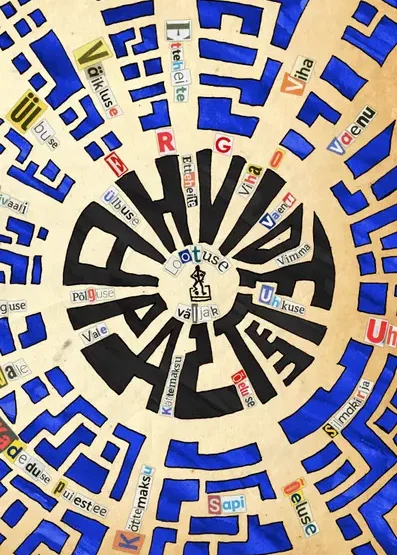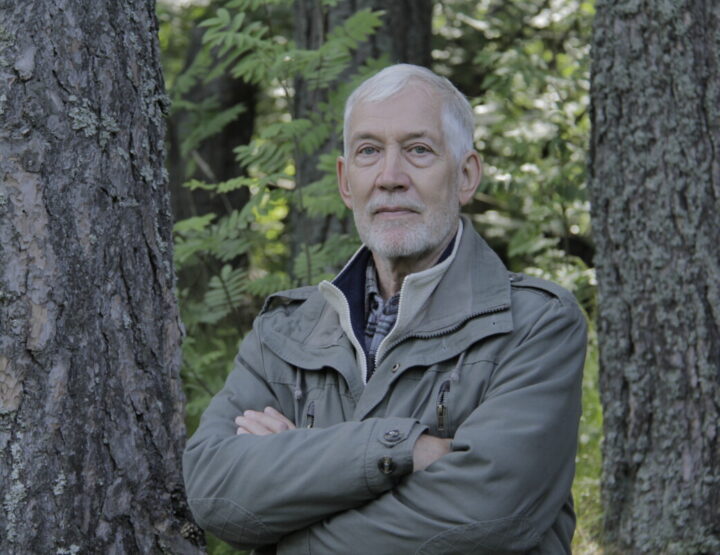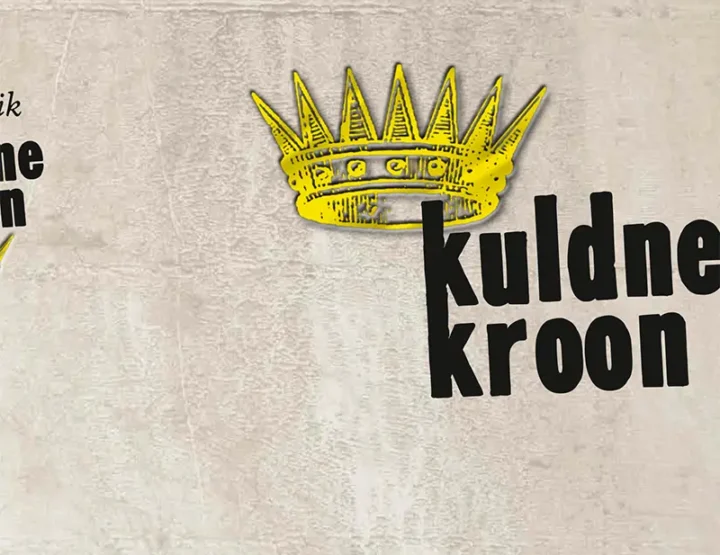Tamara Miljutina, Inimesed minu elus. (People in My Life)
Tallinn, Varrak, 2007. 396 pp
Enn Soosaar. Isa ja aeg. (My Father and Time)
Tallinn, Loomingu Raamatukogu, 2007. 74 pp
Imbi Paju. Tõrjutud mälestused. (Rejected Memories)
Tallinn, Eesti Entsüklopeediakirjastus, 2007. 287 pp
These three books differ greatly from each other, but they are linked by their common subjects – the communist terror against Estonians and other nations, traumatic experiences and how people cope with them. Their common feature is the authors’ fight for the truth of history by using memory.
Estonian Russians have published very few memoirs. People in My Life, written by Tamara Miljutina (1911-2004), an ethnic Russian whose family has lived in Estonia for several generations, was published in Russian ten years ago and has now been translated into Estonian. Through the story of her family, she tells us about the Russian Diaspora and the life of Russian intellectuals in Estonia in the first half of the 20th century, and about the changes brought about by the Soviet regime that affected Russians as well as Estonians. This is also a story of real integration of Russians into the pre-war Estonian Republic.
Her family, respecting education and family values, represented the best Russian traditions of the culture of communication and high intellectuality. The mother of the late author was a legendary physician in Tartu; several of her family members were clerics (her grandfather, a priest, was executed during the Red Terror in Tartu in 1919). Her memoirs tell of the life of Russians in Estonia between the world wars, but also about the life of Russians in Paris (the author was an active member of the Russian students’ Christian movement in Paris). Then, together with the tragic 1940s, the Soviet regime arrived in Estonia. Then, the tragic 1940s arrived. Tamara Miljutina was arrested in 1941 and she spent five years in prison. In 1949, she was arrested again, together with her mother. They had to spend the 1950s in Siberia and were able to return to Estonia only at the end of the decade. Miljutina is a fascinating storyteller and she knows her diverse themes inside out. In addition to reminiscences of her well-known contemporaries, her descriptions of the simple everyday life of Russians in Estonia are unique and thrilling to read. She closes her book with the lines, “I have believed, and believe it even now, that the true Russians were the people who suffered under the Soviet regime. /—/ I am for spiritual resistance to lies at all times.”
The previous sentence is also characteristic of the attitude of Enn Soosaar’s book My Father and Time. Enn Soosaar (1937) is an acclaimed columnist and translator from English (William Faulkner, Saul Bellow and others). His essayistic memoir analyses the impact of devastating dictatorial regimes of the 20th century on ordinary people by telling the story of three generations of his own family. He is searching for an answer to the question, why the destruction caused by this great power had to be quite so brutal, total and absurd. In a short time, Soviet regime ruined his grandfather’s work of half a century. His father, a clergyman, had to choose inner exile for the next half century. The tragedy of his fate was even more magnified by his profession – the clergy were almost shut out of society by Soviet regime. However, their family was lucky – nobody was arrested, nobody was deported, but some of his relatives were not able to escape such fate. Soosaar describes the atmosphere of fear of the time, and his memory of his father burning his books and letters. This family held traditionalism in high regard, and this was one of the ways of silent resistance.
The author deliberates about the options a person can have in society, where the making of choices is almost excluded and justification of compromises is a norm. He asks what it meant to remain honest, and why and how collaborators and executors of the alien regime emerged among their own people. The concept of humanity, based on his father’s Bible, was sorely tested, but it endured. Many people did not pass this test and many values were abandoned. The author says that it was most difficult to survive the systematic and paranoid humiliation of people, and often, humiliation was taken as normal. He states that his father’s generation (people who had grown up in the pre-war Estonian Republic) still had a spiritual anchor, an ethical grip, which the following generations were not able to inherit. Soosaar’s book does not add memories upon memories, but by displaying different images, offers his analysis and warning. “The 21st century is again seducing us. It is frightening and warning us. Again, we should pray: do not put us to the test!”
Imbi Paju is a journalist, writer and filmmaker, whose documentary about her mother and her twin sister, Rejected Memories (2005), has received international acclaim. Using the experience of her mother and her aunt, Paju’s film examines some bitter moments of Estonian history that have. Neither of the women is able to tell all that happened to them during interrogations and how they were humiliated and raped in prison. The film tries to penetrate the wall of silence and to disclose the reasons for silence. The author was born five years after her mother was released from prison, and she remembers waking up at nights to hear her mother scream when dreaming again about these horrors.
The book extends further than the film: besides the stories of her mother and her twin sister, Paju tells us about the similar fates of a number of other Estonians, analyses the traces of trauma in the memory of several of the following generations, puts the everyday lives and unusual fates of people into an historical context. Stories of individual people and the so-called ‘great history’ are examined side by side, resulting in an expressive and distinctive concert. Paju fights against indifference and oblivion, seeking to make the world aware of things that have happened in Estonia. Rejected Memories has already been published in Finnish and it is being translated into Swedish.
Jaan Kaplinski. Seesama jõgi (The Same River)
Tallinn, Vagabund, 2007. 322 pp
Jaan Kaplinski (1942) is an Estonian writer of great international renown. His collections of poetry and essays have appeared in several languages; besides writing in Estonian, he also writes in English and Finnish. Kaplinski started his literary career as a poet and essayist; he has written in almost all genres, but the present novel is his first work in the traditional epic narrative. His earlier prose can be classified either as philosophical allegory (An Eye. Hector. See ELM No 11) or as autobiographical testimony (To My Father, see ELM No 18). Distance from the name identity of the author and the main character, a feature that characterises the autobiography The Same River, fills the gaps left in the autobiographical To My Father. These two books tell the story of the same family, while repeating very few episodes.
The Same River, published in 2007, was written over a long period. This story of development, written in the tradition of the Bildungsroman, does not hide the fact that its sources are in the life of its author. It is not an autobiography in the classic sense but, rather, a universal story describing a certain period, and a monument to lost youth. Such a story of the seeking and suffering of a young man is very often a début work of a young author. If such a story is told later in a writer’s career, it usually results in a literary work telling us of the values that are important to the author. This can be said about Kaplinski’s book, too.
The Same River is centred upon a subject that Kaplinski has previously avoided – the Teacher and his influence on the development of the main character. Although of the two main subjects – relations between the teacher and the pupil, and the sexual maturing and longing for initiation of a youth – the latter occupies more space in the novel, the former is much more important and carries the intrigue.
The teacher is a theologian, an erudite, a poet and persecuted genius, living in internal exile – a persona non grata who is spied upon by the authorities. Almost all educated Estonian readers can recognise the poet, translator and mystic Uku Masing (1909-1985), whose charisma has persisted to the present day, even now recruiting new followers and disciples.
The main character of the novel is a 19-year-old student of philology who writes poems. He has to live in poor conditions, in the same cramped rooms together with his mother, grandfather and other relatives. He feels physically and spiritually tortured by lack of space. Although he is devoted to dreaming about creating wonderful works and about erotic yearnings, he nevertheless becomes a victim of persecution by the KGB.
His meeting with the Teacher opens up new worlds and the youth feels that he has never had such deep and meaningful talks with anybody else; his questions are, at first, fumbling and the answers of the Teacher are often fathomless. Their love for the same young woman is taken as a betrayal by the young man, but is also a part of his maturation.
The novel has another large theme – the era of Soviet totalitarianism, its oppressive and deforming pressure on a sensitive person. The absurd reality deformed the Teacher’s life and it has an effect on the protagonist, whose name is, by the way, never mentioned.
The novel opens with the funeral of the Teacher, moves seamlessly to reminiscences of their first meeting, and continues in the form of memories. It all begins in the early 1960s. The talks of the protagonist with a Communist Party organiser, whose monologues are full of the hypocrisy and absurdity of the era, are of an unsurpassed quality. The main character has copied poems written by the great Estonian poet Marie Under, who lived in exile in Sweden, and has given them to his acquaintances to read. The Party members have learned about it and summoned him to talk, since he has erred against the morale of Soviet citizens. When thinking back on these times, the protagonist quotes his grandfather, who has said that it seemed as if the tree of knowledge had entirely lost its meaning (p. 112).
But still, besides the absurdity of the time, the book contains much more – the youth of a man and the hope of an open soul of finding a universal key to understanding life.
The book has was warmly received. We can be sure that Kaplinski’s novel will stand side by side with other great development stories that have already become classic works of Estonian literature, such as Truth and Justice II by A. H. Tammsaare, and The Wikman Boys by Jaan Kross. The book is honest and precise in its details. Very few works have been written about the same milieu – the university town, the restricted life of pre-war intellectuals – and none of them displays such a sensitive and precise approach to reality and feelings.
Tiina Laanem, Väikesed vanamehed (Small Old Men)
Tallinn, Eesti Päevaleht, 2007. 255 pp
Tiina Laanem (1974) won the 2006/2007 novel-writing competition with her book Small Old Men. The tradition of novel-writing competitions has already enjoyed a history of 70 years in Estonia and its organisers have always aimed to contribute to the birth of masterpieces and to raise the prestige of Estonian novels. For quite a long time, the winners of the competition have been men. This year’s winner, the woman author Tiina Laanem, is a journalist and this is her début novel.
Small Old Men has no great ambitions. The book covers a few summer days on an island, where four male characters, all a few years older than thirty, have come together to spend their holidays. In other words: in the early summer, Aleksander and Eeva are visited by his brother Mark, Mark’s extravagant and sophisticated new girlfriend Ly, and his old friends, the political scientist David and the playboy Olaf. All four of them are well-off men who suddenly find themselves on the brink of mid-life crises. In spite of certain dramatics, the story, combining human relations and descriptions of nature, moves along quite quietly. The developing drama of relationships is sleepy rather than stormy, at least up to Olof’s desperate act, and even this does not bring along a catharsis. Actually, we never learn what happened to dashing Olaf, the former heart and soul of the company.
The author’s method is clearly visible. Each of the characters has his or her small peculiarities to help to make them more memorable. Some dashes of criticism of the petty bourgeois have been added, we are told about the characters’ worries about surviving the hardships of life, and so on. Their worries and concerns are of both an eternal and a very modern nature. Strictly speaking, Laanem’s book does not reveal anything breathtakingly new, but it is well written and she is good with details and pens expressive descriptions. The book is easily readable, having a carefully planned composition, although the actions of the characters seem, now and then, to be a bit weakly motivated.
The head of the competition jury, the novelist Teet Kallas, has said that this winning entry of the competition is a part of the genre of social prose, which is right now in great demand among readers. But being a beginner, Laanem still does not compete with more experienced writers with strong social nerves, such as Eeva Park and others. However, her book is powerfully and tastefully written and her development as a writer, which has only begun, is well worth attentive following. Novel-writing competitions have repeatedly brought interesting new prose authors under the spotlight, offering them a good starting point for their careers.
Debora Vaarandi. Aastad ja päevad (Years and Days)
Tallinn, Tänapäev, 2006. 335 pp
Debora Vaarandi’s book Years and Days, which fits well into the flood of life stories, diaries and historiography that characterises a part of Estonian book production, has aroused more attention and discussion than was initially expected.
Debora Vaarandi (1916-2007) has a firm place among great Estonian women poets. Her debut collection, Under the Burning Sky (Põleva laotuse all), appeared in 1946. Soon she found favour with the Soviet authorities, but during the Stalinist period, against the background of odes to the Great Leader and praise to the regime, her poetry still stood out with its individuality and originality. The popularity of Vaarandi’s poetry reached its peak due to the combined effect of the text, music and performance of a very popular Estonian singer of the time, Georg Ots, in the much loved song The Saaremaa Waltz, which is known by all Estonians.
In the late 1950s, by turning her attention to simple and essential things, Vaarandi surprised her readers with the creative transfiguration and new quality of her poetry. In the next collections she widened her subject matter and became even more intense. She wrote suggestively about fighting for peace and the fate of her country and people and found a poetic form for the power that can be drawn from nature. Her later poetry strove to interpret human existence and sought strength from both defiance and reconciliation.
Years and Days was published just prior to the poet’s 90th birthday. This is a mature and wise person’s retrospective of her youth and the circumstances that affected her development. The book was written in a very poetic style and stands out for its sensitive use of language. Its subtitle, “The Story of My Youth”, indicates the subject that has received her main attention. But many of her readers expected her to write honestly and straightforwardly about her choices, and to analyse, explain or reveal the period of her life when she was true to the Soviet power, or to write without any embellishment about Soviet life, especially about the post-war years.
In this book, however, we can hear the poet’s voice telling us about her childhood on the island of Saaremaa. Her reminiscences are full of details and images; she looks back to the beginning of her life. The critic Toomas Haug has said that in these memoirs, “a concrete world turns into an eternal synthesis”.
But a reader searching for answers to questions about what the participants of the June events in 1940 did, what the ‘June communists’ thought, about their motives and causes, about their later evaluation of events, people and choices, will not find such answers. The poet herself, in an interview about the book, asked a journalist why she was expected to answer questions that historians have not been able to answer.
The memory of human beings is emotional and preserves dreams and impressions much better than politics does. Vaarandi’s memoirs are among the most exquisite works of Estonian memory writing and offer the most for those who are looking not for universal truth in memories but, rather, for a chance to see the world through somebody else’s eyes.
© ELM no 25, autumn 2007




